#vinu daniel
Photo

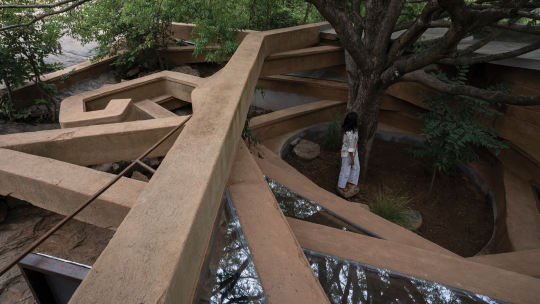
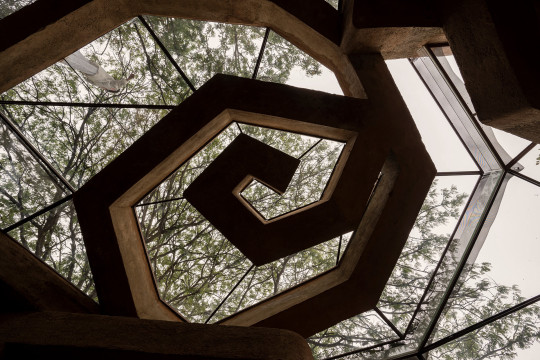



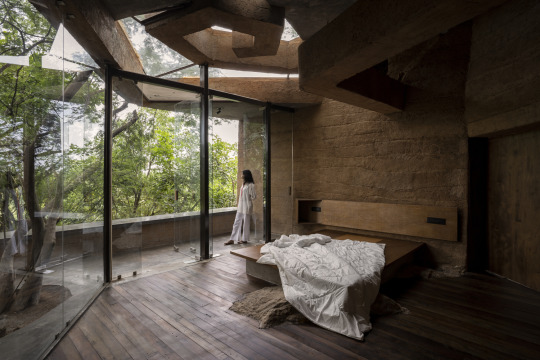
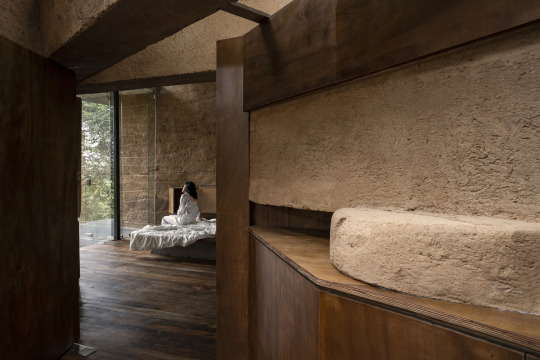


“Chuzhi” (Whirlpool), Shoolagiri, Tamil Nadu, India,
Wallmakers
#art#design#architecture#interiors#india#sustainable architecture#sustainability#chuzhi#whirlpool#tamil nadu#wallmakers#spiral#camouflage architecture#vernacular#vinu daniel
273 notes
·
View notes
Text
"I believe in building with what is available on the land [...] the ideal home should be made using materials from a 5 mile radius. It's about using what you have and making use of any waste."
Vinu Daniel, Design Emergency, pg. 248

0 notes
Link
[ad_1] NEW DELHI: Three notable Indians, including cricketer Harmanpreet Kaur, have earned a spot on TIME magazine's prestigious "2023 TIME100 Next: the Emerging Leaders Shaping the World" list. The list also featured Nandita Venkatesan and Vinu Daniel. It also featured Indian-origin Nabarun Dasgupta.TIME magazine celebrated Harmanpreet's enduring competitive spirit and her profound impact on the world of women's cricket. They credited her with transforming women's cricket from a peripheral interest to one of the most valuable sporting assets globally.At the age of 34, Harmanpreet continues to make headlines and impress cricket enthusiasts.Harmanpreet attained legendary status in 2017 when she scored an incredible 171 not out off just 115 balls in a World Cup match against Australia, leaving fans and pundits astounded by her extraordinary talent.In a recent incident, Harmanpreet was suspended for two matches and fined 75% of her match fee in July for her criticism of umpires during India's match against Bangladesh.In March, Harmanpreet was named the captain of the Mumbai Indians (MI) team for the inaugural Women's Premier League (WPL). The WPL gained significant attention as five franchises were sold for a combined total of $570 million in January.Harmanpreet's leadership led the Mumbai Indians to become the league's first champions, further solidifying her status as a pioneering figure in women's cricket.Venkatesan, 33, is a tuberculosis survivor who lost her hearing during her bout with a multidrug-resistant version of the disease, a side effect of the toxic cocktail of drugs she took during treatment.She was named on the list, together with Phumeza Tisile, a South African health activist, who too lost her hearing to the disease,Together with Médecins Sans Frontières and Tisile, the longtime advocate filed a petition with the Indian government to deny pharma company Johnson & Johnson a secondary patent for a safer and more effective drug to treat TB after its initial patent expired.This made way for cheaper generics to treat the disease.In March, India rejected the secondary patent, a landmark victory that will help make the drug available at a much lower price and separately, Johnson & Johnson announced an agreement this summer that will make generic versions more accessible in lower-income countries, the release said."We had to undergo what we had to undergo," Venkatesan said. "But maybe we could prevent this from happening to others," she added.Daniel, who owns a studio, Wallmakers, was quoted as saying that "his best teachers were masons, workers, and locals in Kerala, India.""While a student there, he met his hero Laurie Baker—an architect celebrated for energy-efficient, evocative buildings—who shared Mahatma Gandhi's advice: the ideal house should be made of materials found within a five-mile radius," the release said.His studio uses mud and waste as the chief components to make structures that are both utilitarian and alluring, according to its website."Vinu teaches us respect for local wisdom and material culture are key for a truly responsible attitude toward the environment and the future," the release said.Indian-origin scientist Dasgupta helped launch a programme through a nonprofit that cleared bottlenecks stopping the opioid-overdose-reversing drug naloxone from getting to the front lines.After creating new supply arrangements and buying the treatment in bulk, the organisation distributed over 1.6 million doses across the country in the past year, helping end a life-threatening drug shortage."Few Americans have done more to prevent drug–overdose deaths than Nabarun Dasgupta," the release said.Dasgupta also devised a system of swabbing street drugs and testing them, collecting valuable information to help scientists and drug users alike.He aims to use science to answer big questions about drugs. "With 100,000 people dying a year, it's not theoretical," the scientist said.(With PTI inputs)!(function(f, b, e, v, n, t, s) function loadFBEvents(isFBCampaignActive) if (!isFBCampaignActive) return; (function(f, b, e, v, n, t, s) if (f.fbq) return; n = f.fbq = function() n.callMethod ? n.callMethod(...arguments) : n.queue.push(arguments); ; if (!f._fbq) f._fbq = n; n.push = n; n.loaded = !0; n.version = '2.0'; n.queue = []; t = b.createElement(e); t.async = !0; t.defer = !0; t.src = v; s = b.getElementsByTagName(e)[0]; s.parentNode.insertBefore(t, s); )(f, b, e, 'https://connect.facebook.net/en_US/fbevents.js', n, t, s); fbq('init', '593671331875494'); fbq('track', 'PageView'); ; function loadGtagEvents(isGoogleCampaignActive) if (!isGoogleCampaignActive) return; var id = document.getElementById('toi-plus-google-campaign'); if (id) return; (function(f, b, e, v, n, t, s) t = b.createElement(e); t.async = !0; t.defer = !0; t.src = v; t.id = 'toi-plus-google-campaign'; s = b.getElementsByTagName(e)[0]; s.parentNode.insertBefore(t, s); )(f, b, e, 'https://www.googletagmanager.com/gtag/js?id=AW-877820074', n, t, s); ; window.TimesApps = window.TimesApps )( window, document, 'script', ); [ad_2] Source link
0 notes
Text
What if construction didn’t create debris but instead used it
Construction debris is a major part of what goes into landfills. But Vinu Daniel turns this on its head, making beautiful buildings from waste …What if construction didn’t create debris but instead used it
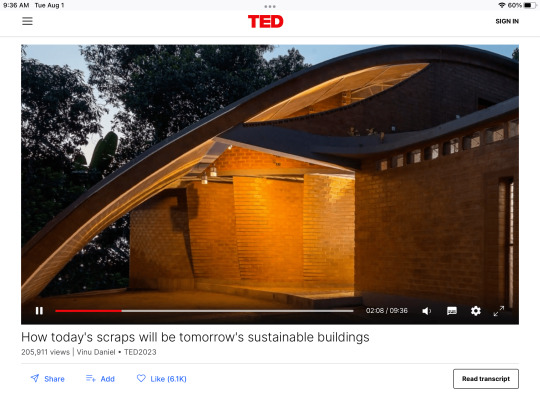
View On WordPress
0 notes
Text

How today's scraps will be tomorrow's sustainable buildings | Vinu Daniel http://dlvr.it/St1Ckb
0 notes
Text
How today's scraps will be tomorrow's sustainable buildings | Vinu Daniel
https://www.ted.com/talks/vinu_daniel_how_today_s_scraps_will_be_tomorrow_s_sustainable_buildings?rss=172BB350-0205&utm_source=dlvr.it&utm_medium=tumblr
0 notes
Text
Built Amid Trees, Sustainable Mud Home Is Made with 4000 Plastic Bottles
In 2020, architect Vinu Daniel — founder of Wallmakers, an award-winning architectural firm that lays focus on building sustainable spaces — was approached with a strange request. The owners of Sanctity Ferme, a farmland plot in Tamil Nadu, were looking to have residential spaces built to accommodate guests.
As Vinu explains, “Situated in a gated community, the place is in a picturesque…

View On WordPress
0 notes
Text
The Twisting Chuzhi House, Made From Recycled Plastic Bottles and Mud – COOL HUNTING®

In rural South India, the Chuzhi house from Wallmakers (an architectural firm founded by Vinu Daniel) twists and turns between rocky outcrops and trees, intricately maneuvering through its challenging terrain. The residence’s structure takes after a snake coiling under a rock and not only works with the landscape in a visual sense but is respectful of it.

Made up of almost 4,000 plastic bottles that littered the nearby areas, the home deftly employs recycled waste while also using the traditional cob-style building technique that mixes clay and straw to produce a durable substance.
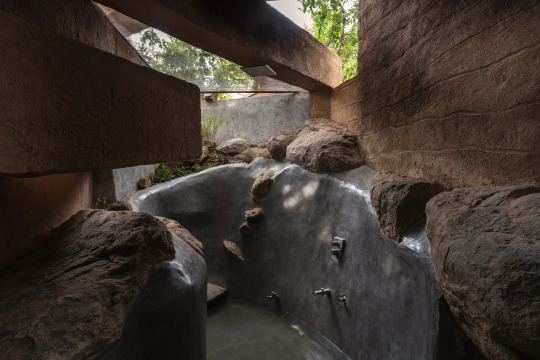
“The idea was to make a subterranean home that would originate from the rock bed, forming multiple whirls around the tree and adjoining to create a secure private space below for the residents and a space around the trees above that ensures that the thick vegetation and ecosystem continues to thrive undisturbed,” the firm says in a statement. Learn more about the project and view the serene
Recycled plastic bottles and mud help form remarkable twisting residence




1 note
·
View note
Text
Bamboo finds favour with artisans and architects in Kerala for green construction
Bamboo finds favour with artisans and architects in Kerala for green construction
The 17th edition of Kerala Bamboo Fest, to be held virtually this year, will highlight the potential of bamboo and its applications
Bamboo artisan Shylaja KP from Wayanad, Kerala, is busy applying the “finishing touches” to her craftwork. As she sets up a home stall showcasing an array of intricate bamboo products at the five-day Kerala Bamboo Fest that kicks off virtually on Tuesday, Shylaja is…

View On WordPress
#architect#artisan#bamboo#bamboo building#Costford#G Shankar#Habitat#Idukki#Kerala Bamboo Fest#Uravu#Vinu Daniel#virtual#Wayanad
3 notes
·
View notes
Video
Hop on board for another tour of some of the most beautiful homes in India. This time we head to Kerala with spaces that are rooted in nature and combine traditional architectural practices and modern design. On the banks of the Chaliyar river, Thought Parallels have crafted a home that allows you to revel in the feeling of lying under a canopy of trees all from the comfort of a vintage wooden four-poster bed. In Ernakulam, Vinu Daniel of the Wallmakers found inspiration in a jackfruit tree to create a home that champions sustainable design inspired by the work of Laurie Baker. Earthitects have designed a series of villas that are immersed in nature and a world unto themselves. At Palarivattom, Aavishkar Architects chose to make the traditional Indian courtyard the star in a home that seamlessly blends the indoors and outdoors. Check out the link in our bio for more! @thoughtparallels @ar.vinudaniel @aavishkar_architects @earthitects Photos: Syam Sreesylam; Anand Jaju (@anandjaju); Justin Sebastian (@justin_sebastian_photography); Ashish Sahi (@ashishsahi) #ADIndia #AroundIndiaWithAD #homes #architecture #Kerala https://www.instagram.com/p/CYzJ199Jw_Z/?utm_medium=tumblr
0 notes
Text
Wallmakers uses brick to create curved supporting walls at Pirouette House
A series of twisting walls made from local brick form partitions that separate the living spaces within this house in the Indian city of Trivandrum.
Local architecture office Wallmakers designed the Pirouette House as a tribute to British-born Indian architect Lawrence Wilfred "Laurie" Baker, who promoted the revival of regional building practices and the use of local materials such as brick.
Top: a screen was made using reclaimed scaffolding pipes. Above: internal walls twist between rooms
The house is situated on a compact site in the capital of the southern state of Kerala. It is surrounded by other properties, which led the architects to design an inward-facing building with spaces arranged around a central courtyard.
Wallmakers based the house's construction on a bricklaying technique – the rat-trap bond – used by Baker, who created several buildings in Trivandrum that demonstrated a pioneering approach to sustainable and organic architecture.
Curved walls conceal structural components
The rat-trap bond is a way of laying bricks at right angles to create a cavity in the wall that helps increase thermal efficiency and reduce the volume of bricks required.
At the Pirouette House, Wallmakers adapted this technique to create curved walls that provide enhanced structural performance as well as concealing structural components and service ducts.
A metal staircase leads along the side of the reclaimed screen
"The idea was further developed to form a series of slanting walls that dance left and right, converging only to support the ferro-cement shell roof," the architects explained.
"Each staggered wall has been tailor-made to suit the issue of deficiency in space that this residence posed, aiming to create larger volumes and a feeling of privacy."
The kitchen diner has an open plan arrangement
The twisting brick walls create attractive shapes that seem to gently envelop the different rooms within the house. Protruding bricks produce patterns of light and shadow on the surfaces, which didn't require any additional finishing.
The project's use of kiln-fired brick also supports a local industry that is in danger of collapsing, as construction firms typically favour machine-made brick.
Baker was known for salvaging and reusing waste materials, and for this project metal scaffolding pipes used during the house's construction were repurposed to form the treads of the main staircase, as well as for screens incorporated into several openings.
Scaffolding planks were reused to form part of the living room's floor, and locally sourced cane has been woven around metal poles to create screens and furniture including chairs and a sofa.
Bricks protrude from the walls of Pirouette House
The building's floor slabs and roof are made from ferro-cement, which combines cement with steel reinforcing bars that allow for much thinner profiles and therefore less material than an equivalent structure made from reinforced concrete.
The house features a sheltered carport and entrance area that incorporates bench seating, with curving steps leading up to the front door. Inside, the ground floor contains an open living area with a sunken courtyard positioned beneath the staircase.
A circular wall feature was created using concrete
The kitchen is situated to the rear of the space and features a cantilevered dining table that projects out into the living area. A bedroom with an en suite toilet is also accommodated on this level.
The staircase ascends to a landing that provides an informal lounge area. Two further bedrooms, including the main suite, are located on this level, along with a terrace that looks out across the surrounding neighbourhood.
The bedrooms have angular windows
Wallmakers was established by architect Vinu Daniel in 2007 and was named after its first project, which was a simple compound wall.
The studio has subsequently focused on creating buildings using natural materials including earth, as well as reusing discarded materials in its low-cost, eco-friendly projects.
Elsewhere in India, Anagram Architects created this home which was split by a full-height atrium while Studio PKA built a home in Alibag with brick-lined interiors.
Photography is by Jino Sam.
The post Wallmakers uses brick to create curved supporting walls at Pirouette House appeared first on Dezeen.
0 notes
Text
Material Specialization: The Next Big Thing in Sustainable Building Design?
Materials form an integral part of built forms. Anything designed needs to be made of an appropriate material, or a mix of materials for that variety!
Designers have been experimenting with materials throughout history, be it Lauri Baker with his modest bricks or Frank Gehry with his dramatic titanium. Every day a new material is being invented and new ways of looking at old materials are found. The growing concern for sustainable building design has led new age designers to study and experiment with materials extensively, some managing to make material their branding!
Read through to find out about some popular materials and the designers those have become their ambassadors:
A Story in Timber
A traditional natural building material, timber seems to be making a resurgence. Versatile in nature, but not without limitations, it has always been the centre of attention for material researchers. Its light carbon footprint (can even be carbon positive!), recyclability, and workability makes it a great material for creating sustainable building designs for areas with high timber availability.
Experimenting with scrapwood furniture like Piet Hien Eek or building skyscrapers of timber like Chris Precht, designers are going above and beyond in testing the extents of this material for a greener future on this planet.
[Also read: Why is Chris Precht One of the Most Popular Young Architects Today?]
Stones have a Heart
Nothing screams rustic more than stone!
Being one of the primary natural building materials, it is abundantly available in many different forms, colours and textures. Post the industrial revolution, it was lost among newer materials, only to rise tougher than ever (pun intended)! Design groups like Peter Rich Architects from South Africa and Earthitects from India are giving new definitions to stone-built spaces and pouring life into the static forms we live in.
Earthy Encounters
Building from earth has been in practice since prehistoric times. Earth shelters are made of treated mud/ soil/clay or a mix of soil with straw and stones which have proven to be good in responding to the local climate.
Few may doubt the durability and strength of earth structures, but architects like Chitra Vishwanath from Biome and Suhasini Ayer Guigan from Auroville Design Consultants have been revamping the practice of earth architecture, advocating for sustainable building design, and permanently associating their names with mud structures along the way!
[Also read: Best Architecture Firms in Asia to Intern With]
Best Out of Waste
Do you remember making art from pencil shavings or bookmarks from ice cream sticks as a kid? Imagine doing that to real-life built forms!
Architects like Michael Reynolds and Vinu Daniel have been taking a trip back to school. Using scrap or salvaged materials to create brilliant structures, they nudge not only other designers but also the general public towards sustainable living. Imagine creating a niche so strong that when ‘building with waste’ is mentioned, your name automatically comes to mind!
This is innovation and branding at its finest.
The Glass Class
From a mirror to the building exterior, glass can be found everywhere!
Its (often over-use) in the building gives a sleek, contemporary look. But if used well, it has soundproofing and insulation qualities which make it suitable for green building design (think fiberglass and glass bricks!).
Some use of glass is unavoidable because you have to let in light, but Bohlin Cywinski Jackson embraces the lightness and transparency of glass to look at public spaces in a whole new way.
The Concrete Jungle
Concrete is undoubtedly the most used man-made building material in the construction industry, and a favourite of the brutalists among us. But today, it is no longer simply hidden away in unseen foundations or structural framework.
Korean Architect Lee Hun Chung makes use of the solidness of concrete to create fixed furniture, bringing the built surroundings to our body!
A Bamboo Forest
Originally highly underrated, Bamboo is rapidly gaining international popularity as a sustainable building material.
It has immense compressive and tensile strength, and the fact that it is a kind of grass means that it can grow as fast as 1-4 inches per day! Conventionally used for making domestic items, temporary structures and scaffolding, Bamboo has the potential for much more. In the spirit of uplifting green building design practices, Vietnamese Architect VoTrongNghia stated that this ‘green steel’ of the 21st century will take over other materials in the years to come!
The Wicker Park
Don’t we all love to see the intricately woven picnic baskets or rattan chairs, a sprinkle of wickerwork here and there?
One of the most domestic forms of crafts, wickerwork can give a space character and authenticity, and occupies lots of respect in the furniture and interior design industries. With parametric and computational design tools that can model complex organic forms, The Wicker Story creates furniture and interiors using wicker, and has made the material their identity!
[Also read: Top Parametric Design Firms in India]
Design is an exciting and dynamic field with new avenues opening up every day!
In a quest to explore new solutions for present-day problems, and for creating very relevant, niche branding for themselves, material specialisation is indeed the next big thing in design.
With the kind of resources available today, it isn’t difficult to start your own research on materials that intrigue you. If you need help getting out of your comfort zone, explore in-depth online design courses with Oneistox!
[Read: 8 Reasons Why Designers Choose to UpskillWithOneistox]
About the Author
Neha Sharma | Architect
An architect by profession and an artist by nature, Neha is fascinated by all the subjects which involve art and humanism. She has a diverse set of interests; doodling, dance, photography, writing and collaborative activities which made her pursue the field of architecture and design. She believes herself to be a people person and never misses a chance to learn something new.
0 notes
Photo

Actor Rima Kallingal on making use of Vinu Daniel’s architectural house for an experimental dance videohttps://www.newszada.com/wp-content/uploads/2021/01/Actor-Rima-Kallingal-on-making-use-of-Vinu-Daniels-architectural.jpeg The actor-dancer turned Pirouette Hous...https://www.newszada.com/actor-rima-kallingal-on-making-use-of-vinu-daniels-architectural-house-for-an-experimental-dance-video/?feed_id=878661&_unique_id=6002d6a4b5ddb
0 notes
Audio
Journey of a Sustainable Architect in India with Vinu Daniel | AG 26 https://audioboom.com/posts/7476406-journey-of-a-sustainable-architect-in-india-with-vinu-daniel-ag-26
0 notes
